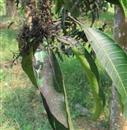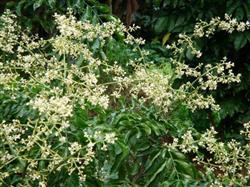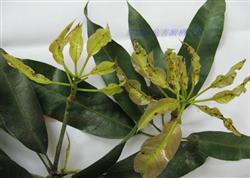How to prevent and cure bituminous coal disease with big mango?

What harm does the bituminous coal disease of big mango have? How to prevent and cure bituminous coal disease with big mango? Netizens who want to know can help introduce the distribution of mango bituminous disease in Yunnan, Guangxi, Hainan, Guangdong and Fujian provinces (autonomous regions). It is a common and major disease and is common in arid areas. The planting network has sorted out the harm and prevention and control methods of big mango bituminous coal disease, which are listed below for netizens' reference. The harm of mango bituminous coal disease: the leaves harmed by bituminous coal disease are covered with a loose, reticulate layer of black powder mildew, which hinders leaf photosynthesis. Mildew is limited to the leaf surface, and the combination with the leaf is not close and easy to erase. The black mildew layer of bituminous coal disease in mango florescence will cover inflorescences, spikes and lateral florets, affecting the pollination of florets, resulting in a decrease in fruit setting rate; the small fruit is easy to fall off due to the influence of mildew layer, and the pericarp of the affected fruit is dirty and its appearance is poor in the later stage of fruit growth. and easy to induce postharvest diseases. Incidence time and causes of mango bituminous disease: in areas with obvious spring drought (western Hainan, Leizhou Peninsula in Guangdong, Baise in Guangxi, Yunnan) or drought in fruiting period, Homoptera (flat-beaked leafhopper, aphids, shell insects, white moth wax cicada, etc.), Thysanoptera (thrips) and mites have high population density, which is rampant and sucks young leaves and young fruit juice. At the same time, a large number of amino acids, sugars and waxes were excreted and adhered to the surface of the host tissue, which was a good substrate for the reproduction of soot bacteria, and the mycelium multiplied rapidly to form a large amount of black mold layer to cover the surface of branches, leaves and fruits. The disease occurred more seriously in orchards with old trees, shade and poor cultivation management. The prevention and control methods of mango bituminous disease: first, strengthen the cultivation and management of the orchard, prune reasonably, the old orchard should retract the crown, cut off the inner chamber branch, withered branch and pest branch, and improve the ventilation and transmittance of the orchard. It can reduce the hidden places of leafhoppers, aphids, thrips and mites. Method 2. Regularly control leafhoppers, aphids, thrips and mites in the dry season. Method 3. Fungicides were regularly applied to inhibit mold growth. 75% chlorothalonil wettable powder or 40% methomyl glue suspension was used to spray the tree crown with an interval of 15-20 days for 2-3 times. Click to get more mango planting techniques click to get more fruit planting techniques
- Prev

How to manage the flowering of wampee?
How to manage the flowering of wampee? Is there anything you should pay attention to? There are no netizens to help guide the farming network to sort out the management methods of the wampee tree after flowering and the difference between the spring and autumn shoots of the wampee tree, which are listed in detail below for netizens' reference. The main points of management of wampee tree after flowering: first, timely.
- Next

How to prevent and cure anthracnose of mango?
What harm does mango anthracnose have? How to prevent and cure anthracnose of mango? Also ask experienced netizens to help introduce the harm and control methods of mango anthracnose in the farming network, which are listed in detail below for netizens' reference. The harm of mango anthracnose: mango anthracnose is mainly harmful to mango flowers, fruits and tender.
Related
- Moge, come on! The staff of the peasant association in the producing area of cantaloupe were frightened when the crowd gathered.
- Causes and Solutions of low Fruit setting rate of Apple
- Symptoms and control measures of passion fruit virus disease
- Fruit growing lesson: how do apple orchards keep high yields?
- Can you build orchards in the mountains? What are the pros and cons?
- How to manage the coloring period of Crisson grape?
- This paper introduces the processing technology of two kinds of fig products.
- How much is a month for retired teachers in rural areas by 2020?
- How can strawberry planting increase sugar content? We should pay attention to management in many aspects.
- What are the cultivation techniques on how to improve the yield of golden fruit?

